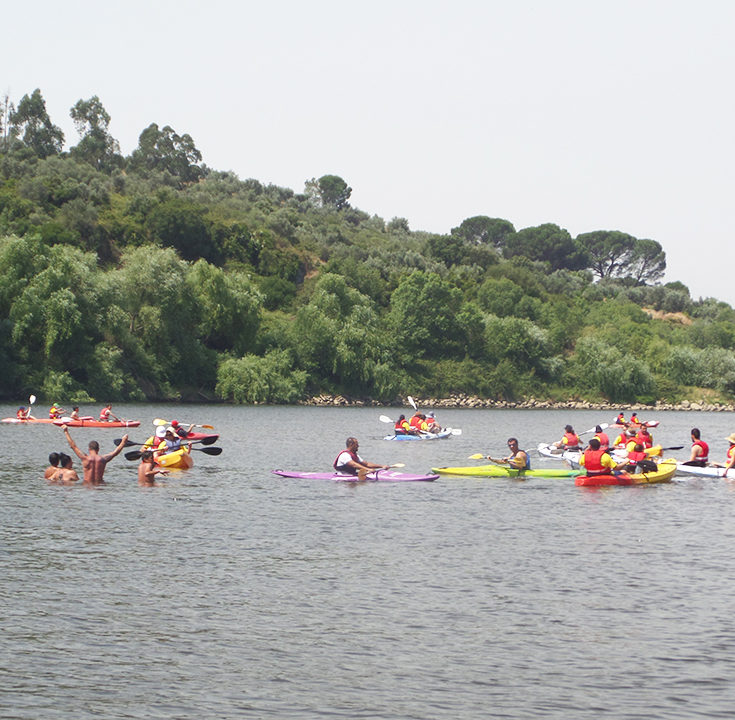Vila Nova da Barquinha Tour: from the Almourol Castle to the Contemporary Sculpture Park
The radio was on. The key was in the ignition — it was time for another road trip. Our destination? Vila Nova da Barquinha, a place I had never heard about until a few weeks ago.
There was one thing about Vila Nova da Barquinha that I did know though — the Almourol Castle. A beautiful monument set on an islet on the edge of the Tagus river. The castle is often featured in lists about the “Top Castles in Portugal”.
And while that is the most famous feature of this town, there are many other things worth exploring around here.
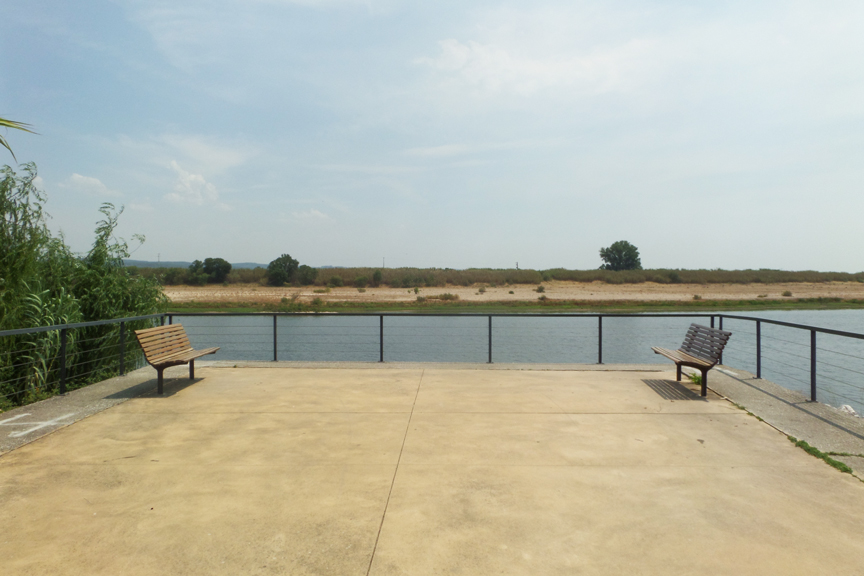
A thousand and seven kilometers — that’s how long the Tagus river is. I’ve seen people sitting by it in Lisbon, admired the colorful reflections in Vila Franca de Xira, and was blown away by the natural wonders of Portas do Ródão, yet it all seemed like a different river. And there it was again, flowing quietly through Vila Nova da Barquinha.
Arriving at Vila Nova da Barquinha
After leaving the highway, we found ourselves driving on smaller and smaller roads, until we finally reached our destination.
Our meeting point was the Cultural Center of Vila Nova da Barquinha. We later found out that was also the Tourism Center of the area. I met Filipe inside. He is one of the people behind Tritejo, a company that organizes boat trips around the Tagus river in this town.
Filipe was also our tour guide for the day. Up until five years ago, there was no tourism center in the area, so what did they do? They created their own.

I got a message from Filipe on Instagram one day asking me if I wanted to get to know Vila Nova da Barquinha. Since I’m writing this now, you probably know the answer was yes. The thing is, I had already planned to come here before. It was just that extra push that I needed to get on the road.
I was surprised, and at the same time, honored to be the first Portuguese to take him up on the offer. But then again, that’s what I do — write about those small places no one ever talks about.
The town was as quiet as the desert. There were empty stalls leftover from the Santo António celebrations (yes, they celebrate it here too!) and very few people walking on the streets. The only thing you could hear was the birds chirping.
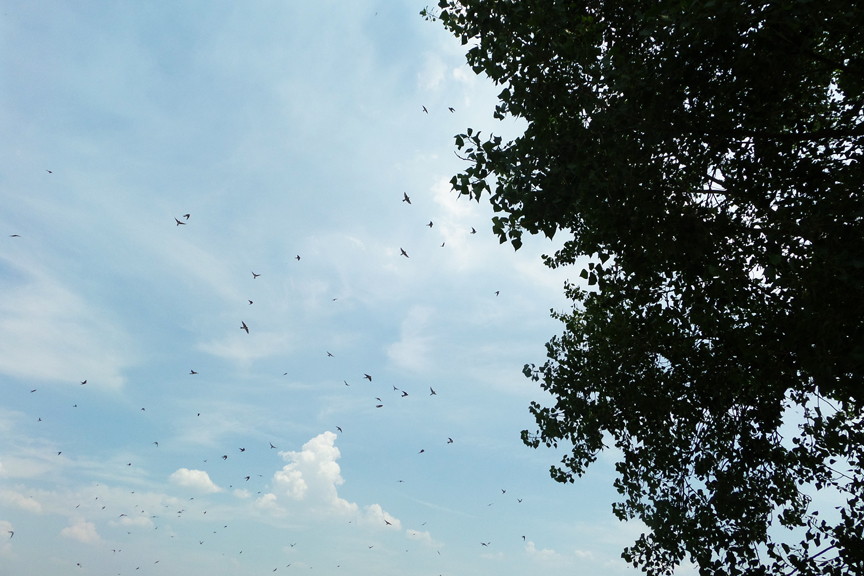
Sailing in Vila Nova da Barquinha
Once we got on the boat and started getting closer to the castle, we found many people canoeing along the river. We watched them leave the shore one by one, and I noticed how the vivid colors of the canoes highly contrasted with the clear blue sky of that day.
Summer hadn’t officially started by then, but the heat was killing us already. We treasured every bit of wind that came our way as we sailed towards the castle.
At a distance it was a magnificent sight, a large castle on an island, that looked straight out of a fairytale. We saw it from every possible perspective, the side, the front, the top, and the bottom. Even though it was smaller than our first impression from the outside, it was definitely not less admirable once we came in.
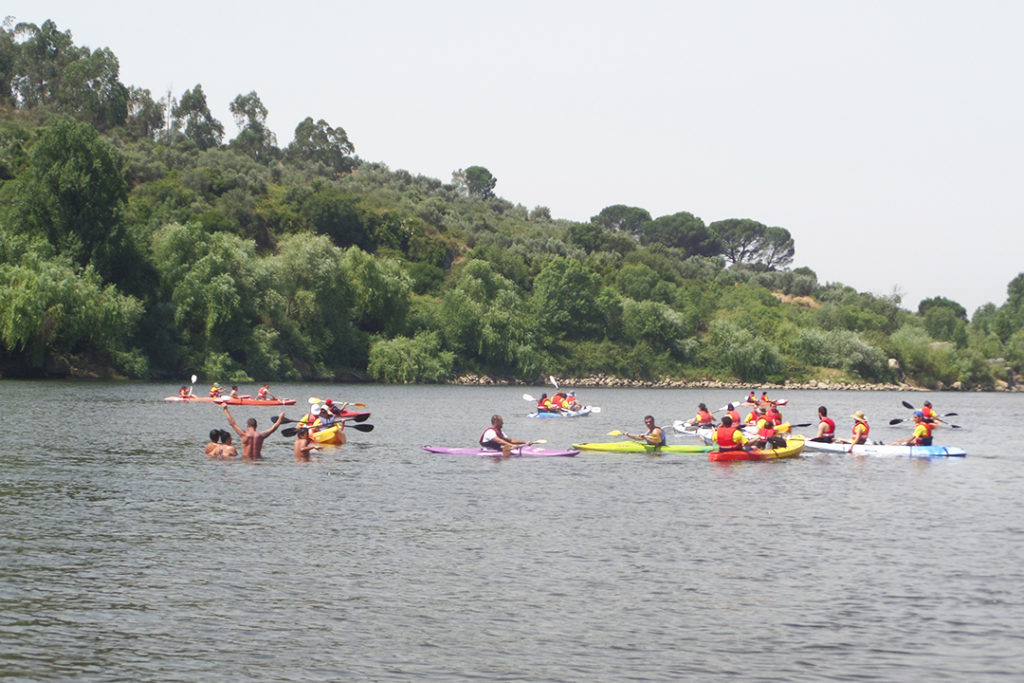
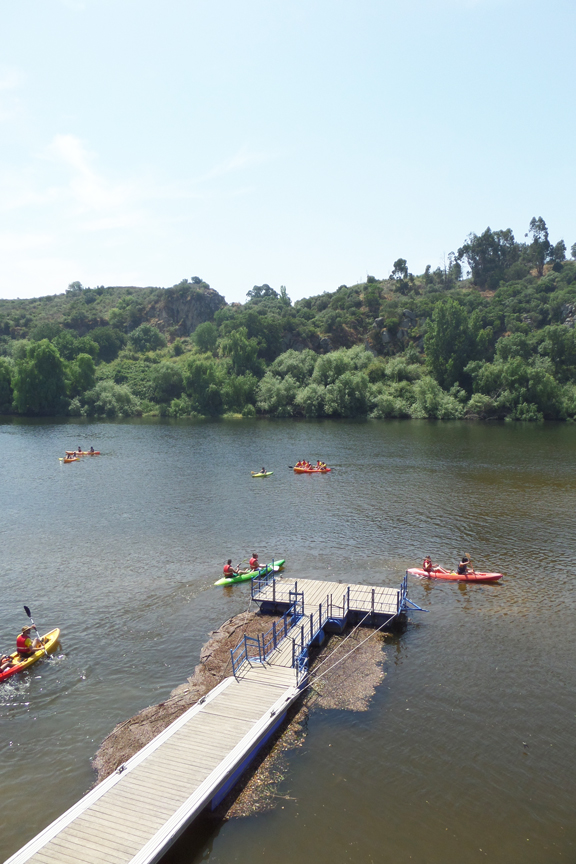
Filipe explained that this stretch of river was actually man-made. It used to be a lot bigger, but then they had to build walls to stop the river from destroying the arable lands around the area.
For many years (before there were cars, trains, and planes), boats were used to carry supplies from one town to the other. Basically, the Tagus river was the town’s first “highway”. Things changed as soon as the railway station got established, though. People started moving out from the small towns, and boats were no longer needed to carry things around. This is where Tritejo came in. No one thought of doing boat rides here for a while, until they did.
Of course, having a medieval castle nearby also helps attract more tourists, but I dare you to take a long ride and see how peaceful this place can be.
Almourol Castle
The Almourol Castle was one of the many castles belonging to the defensive line of the Knights Templar. You can find their trademark on the castle’s main tower, also known as the keep (or Torre de Menagem in Portuguese). For a while, it was even considered as the official residence of the Portuguese Republic.
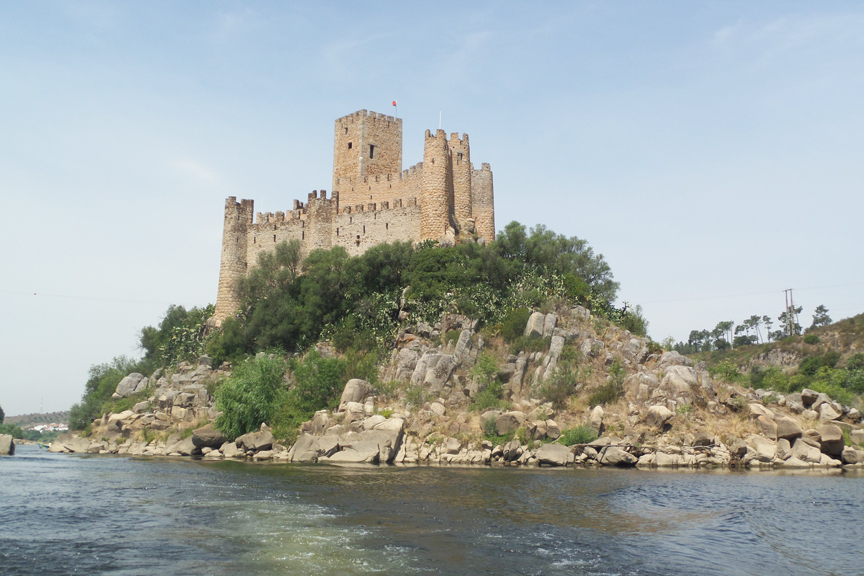
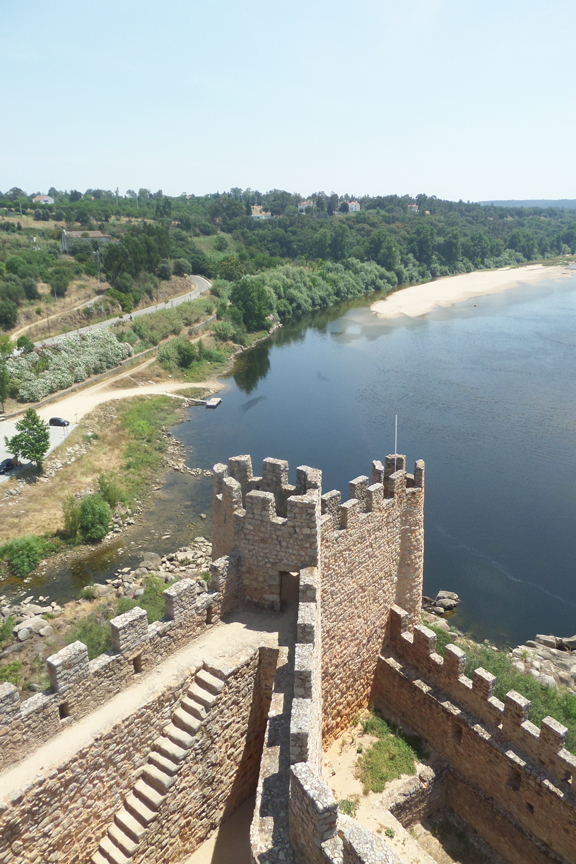
Surrounding the castle, we found many cactus. These have been here for so long that they have become actual trees. Well, that’s something that I’ve never seen before.
Filipe also mentioned that they made liquor out of the cactus fruit — a drink called Medronho. It’s not the same type of Medronho you might be familiar with, made with medronho berries.

Restaurante Almourol
After we visited the castle, we headed to Restaurante Almourol, a traditional restaurant with a stunning view of the river.
A bell pepper salad and toasted bread were waiting for us on our table. Later, chef José came to greet us. Honestly, I don’t think I’ve ever had the chance to meet a restaurant’s chef. He was working at an agricultural fair that day, so it was only a brief introduction, but I did thank everyone in the end for the wonderful service.
On the menu, there were typical dishes of the area, including eel (enguia) and mullet fish (fataça). None of us were big fans of eel, so we ordered mullet fish, catfish, and pork skewers. I have to admit the star of the meal was the mullet! We still left some room for desserts, and with our stomachs full, we (slowly) made our way to the car for our last stop of the tour — the Contemporary Sculpture Park of Vila Nova da Barquinha (I know, quite a big name).
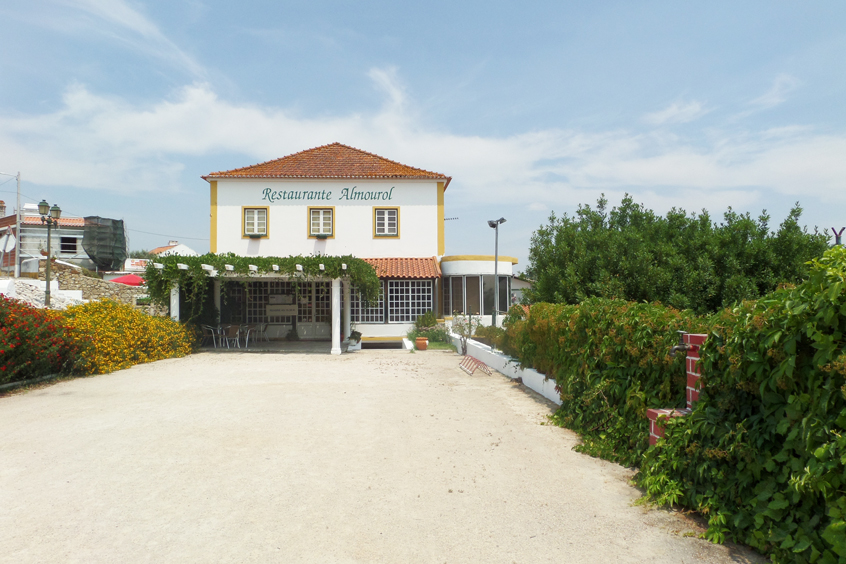
Contemporary Sculpture Park of Vila Nova da Barquinha
There are many sculptures spread around this 7-hectares park, making it a unique outdoor gallery. Alberto Carneiro, Rui Chafes, and Joana Vasconcelos are a few of the artists who have contributed to this project. You can interact with a few of the sculptures or simply gaze at them from afar. It’s up to you.
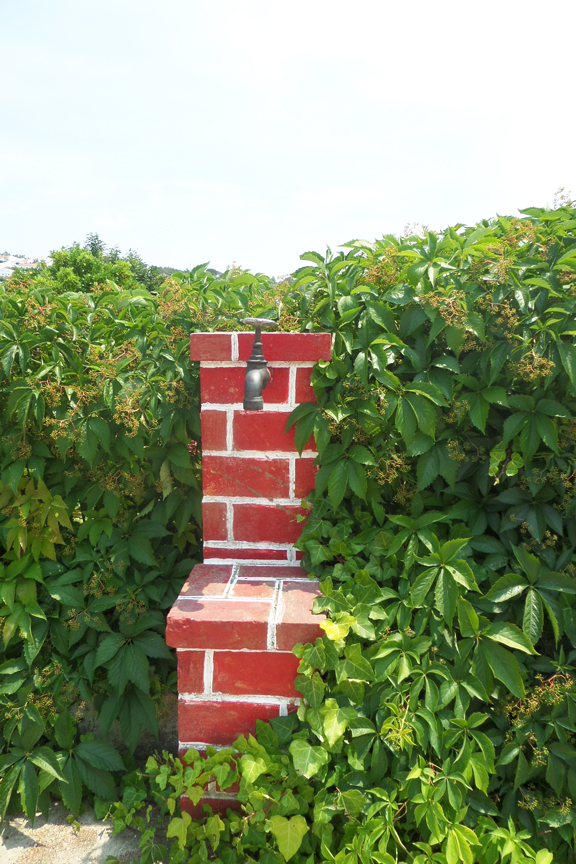
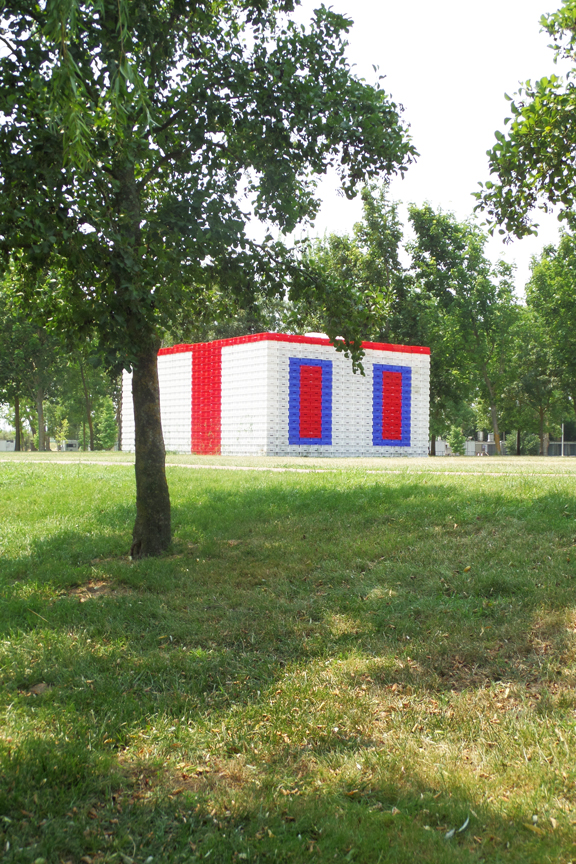
We had so much fun seeing our legs magically stretch in the hall of mirrors, and got hypnotized by the circular movements of a black and white wheel. For a minute, we forgot about the overwhelming heatwave.
When the tour was over, we stocked up on water bottles, said goodbye to Filipe, and got back on the road to Lisbon with a promise of sharing this wonderful place with the world, or at least to those of you who are reading this.
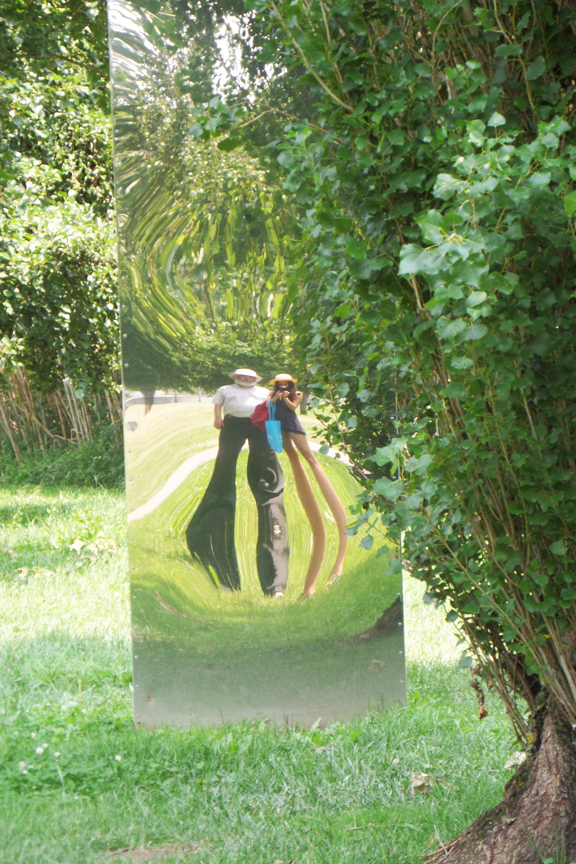
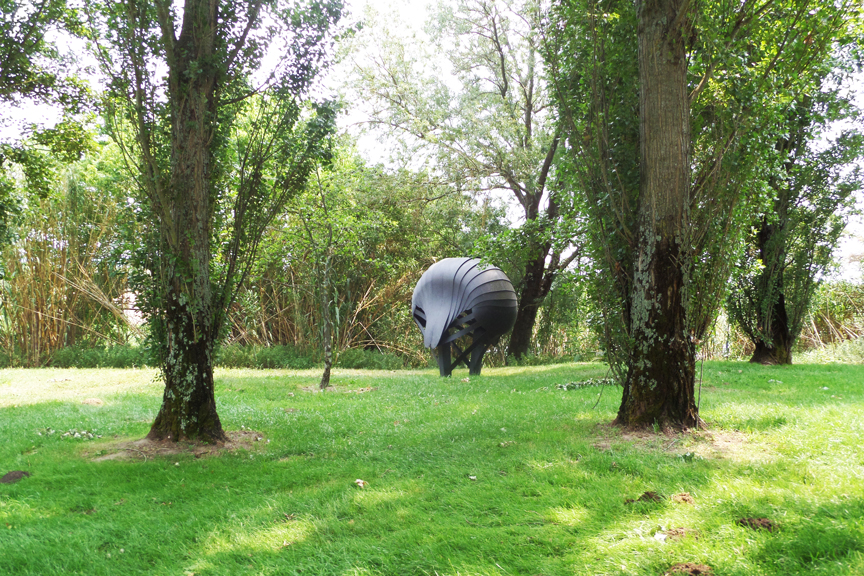
How to get to Vila Nova da Barquinha
- By car: it takes around 1h30 from Lisbon to Vila Nova da Barquinha, you can find the directions here.
- By train: you can get the train to Vila Nova da Barquinha from Santa Apolónia or Oriente, and you’ll be there in around 2 hours, depending on the type of train you catch. The closest stations are Barquinha, Tancos, and Almourol, get your tickets online here or at one of the train stations in Lisbon.
